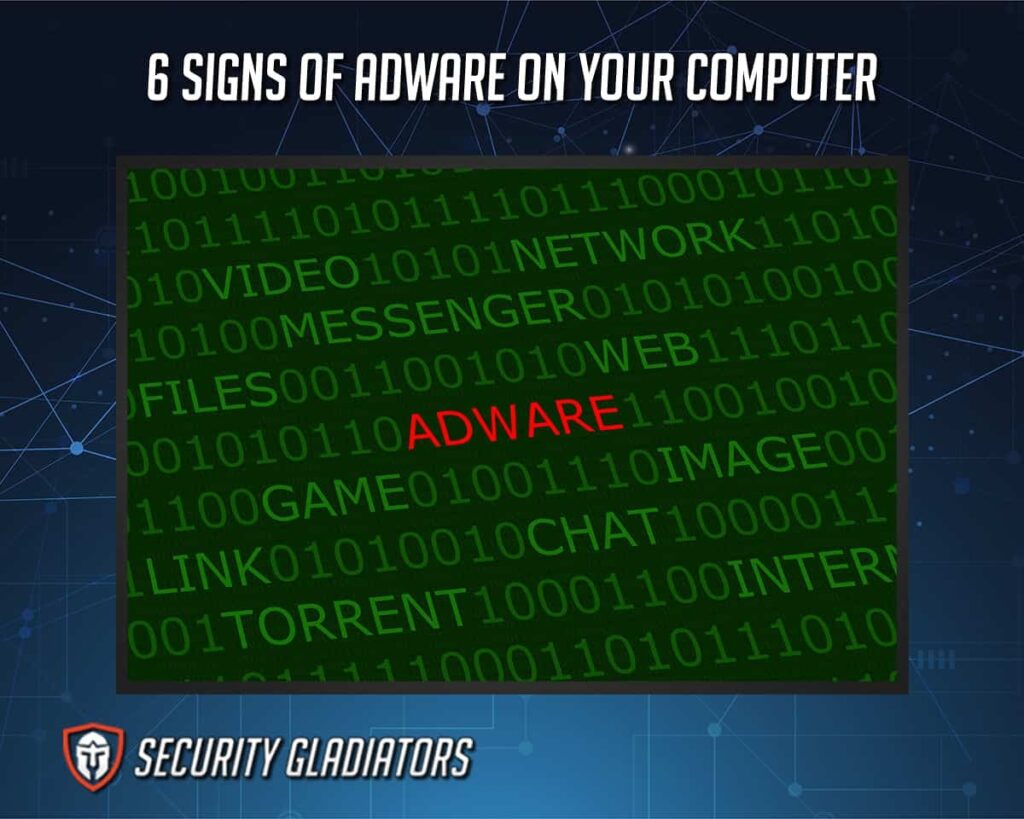
Below are six signs that a user might have adware on the computer.
- Ads That Pop up Appear Everywhere
- Your Browser Keeps Redirecting
- Unknown App Issues Terrifying Warnings
- Strange Posts Appear on Your Social Media Accounts
- You’re Bombarded With Ransom Demands
- Your System Tools Have Been Deactivated
Table of Contents
1. Ads That Pop up Appear Everywhere
Adware programs display ads on all websites a user visits, even if a user doesn’t have an account with the advertised service. Users will see ads for products or services that aren’t relevant or even exist.

Some adware programs display ads in pop-up windows that block other parts of the screen so that users can’t see what’s beneath, forcing users to close pop-up ads manually.
Warning:
These types of advertisements pose security risks because these ads could contain links to viruses and other malware or exploit code that could cause damage to the user’s system if clicked on accidentally.Pop-up ads are the biggest indicator that users are infected with adware. As the name suggests, pop-up ads appear suddenly in the browser window, often when browsing the web or checking email. Pop-ups can also be triggered by entering a search term into a search engine or opening an email attachment.
Pop-up ads look like legitimate notifications from websites such as Facebook or Google, but are actually advertisements for products and services that may not be legitimate. These ads typically feature images or video content and include links to external websites where users can buy products advertised in the pop-up ad.
2. Your Browser Keeps Redirecting
This is one of the common signs of adware on the user’s PC because this happens when there is an ad injection platform running in the browser. An injection platform injects ads into web pages that a user visits without being detected by the user.

Users may constantly need to go back and forth between tabs to reach certain pages or perform certain tasks on the PC or in the cloud.
3. Unknown App Issues Terrifying Warnings

One of the common signs of adware on the PC is when a user receives a strange error message in the internet browser, warning a user about an unknown app. This message may say something like, “App cannot be executed.” The message will often have an option to disable this app or to run the application anyway, which will probably install more adware.
Often time these apps will have a name that makes little sense. This may be named “shopping assistant” or “weather app.” Sometimes these applications will warn a user about something wrong with the PC, for example that the PC has a virus, and offer to clean the issue by installing the software.
4. Strange Posts Appear on Your Social Media Accounts

Adware can use users’ social media accounts to post messages on the user’s behalf without permission. If a user notices strange posts being made in the user’s name, this may indicate that a user has adware on the PC. These strange posts often contain links to sites that may contain malware. Anyone from the user’s friend list who falls for the fake and opens the link becomes the malware’s next victim.
5. You’re Bombarded With Ransom Demands

Malware programs can be particularly devastating to a computer or an individual’s files if the malware program holds the personal data for ransom. Ransomware threatens to encrypt all users’ pictures and documents unless a user pays the ransom. The most egregious offenders are those that encrypt users’ entire hard drive, rendering the computer useless unless a user pays to have the data decrypted. Others are simply pretenders.
Note:
These demands may appear as an alert window or as a full-screen message. Some versions of this type of malware disable popular antivirus programs, so these antivirus apps can’t protect users’ private data from further damage or infections.6. Your System Tools Have Been Deactivated
Adware can hijack users’ system tools, such as Task Manager, Registry Editor and Command Prompt, so that users can’t remove the adware. If a user no longer accesses these tools, adware is likely on the user’s system. To fix this issue, try restarting the PC in Safe Mode with networking so users can use Windows’ built-in troubleshooter to reset the tool back to normal.

What Is Adware?
Adware is malicious software that can infect the user’s computer and display unwanted ads. To identify what is adware a user should look for ads displayed as pop-ups or as banners and that offer to download an application or open a website. The ads are usually for products that a user is not interested in purchasing, but these ads can sometimes be for useful programs that a user wants to buy.

Where Does Adware Come From?
Adware is a malware designed to show ads on the user’s computer. Typically adware comes from third-party download sites or even through adware bundles that are included in software a user downloads. Adware is typically installed on a user’s computer through a browser extension or software. The user can also download separately and then install adware manually.
What Are the Drawbacks of Having Adware on Your Computer?

The primary drawback is that adware can cause the user’s computer to slow down. This is because the adware will constantly run in the background, checking for updates and ads.
The adware can cause problems when a user tries to install other programs on the computer. This is because many antivirus programs will detect adware as a virus and block the programs from installing.
How To Prevent Adware?
Adware is spyware that displays advertisements to users. Adware often comes bundled with other software and can be difficult to detect.
The steps of how to prevent adware from infecting the PC are below.
- Don’t Install Programs From Unknown Websites: Malicious software often disguises itself as something else, such as a game or useful program. If a user is unsure if something is safe to download, check the reputation of the program online before installing the software on the PC.
- Use an Antivirus Program With Real-time Protection Enabled: Antivirus programs offer several layers of protection against malicious threats, including viruses and spyware.
- Keep All Applications Up-to-Date With the Latest Security Patches and Bug Fixes: This includes browsers, email clients and other applications that connect directly or indirectly to the internet. Software bugs are common ways that malicious programs get onto computers undetected by security software or otherwise bypass defenses put in place by developers (such as firewalls).
How To Remove Adware?
There are several free and paid programs that can help users get rid of adware, along with plenty of tutorials that explain how to remove adware step by step.
Below are some ways to remove adware.
- Using an Anti-spyware Program and Scanning for Adware Files: This is a good idea if a user has no experience with removing malware from the computer or if a user doesn’t know which anti-spyware program is best for removing adware.
- Manually Deleting All Adware Files From the User’s System: This method works best if a user has experience with removing malware from the computer and knows what kinds of programs are installed on the PC.
Is Adware Dangerous to Your Computer?

Yes, adware is dangerous to users’ PC. That’s because the adware can cause much damage, not just to the user’s personal files. Adware is dangerous to the PC because adware can infect the user’s PC with other malware, a type of software that can steal users’ personal information and install viruses onto the user’s PC.
Adware can take over the user’s PC and do things without the user’s knowledge, like spamming friends with links that lead to malicious sites or sending out spam emails to random people.

